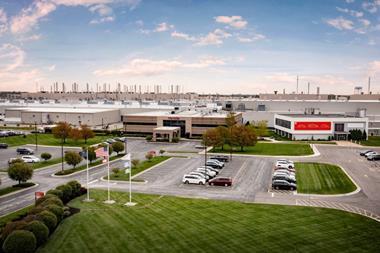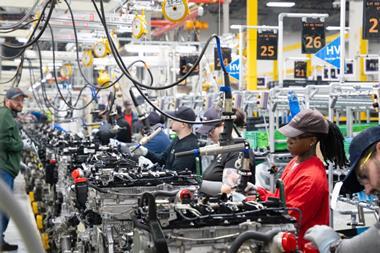From explosions to system failures, Toyota Japan’s production standstills highlight the need for diverse supplier networks, robust safety measures and resilience
Toyota, one of the world’s largest automotive manufacturers, is facing an extended production shutdown that now affects ten vehicle assembly lines across six of its plants in Japan.
The catalyst behind the ongoing disruption is a critical component shortage triggered by an explosion at a key supplier’s facility.
With a total of 14 assembly plants in Japan, responsible for producing vehicles destined for both domestic and international markets, Toyota’s production gridlock is, once again, sending ripples across the industry. The automaker has encountered difficulties procuring essential suspension system springs and other vital components for a range of models, including the popular RAV4 and the rugged Landcruiser SUVs.
The explosion occurred at a factory owned by Chuo Spring, a supplier of these crucial components. The incident in question, which took place within the factory’s steel cooling section, led to injuries for two of its workers. An ongoing investigation is striving to uncover the exact cause of the accident.
The repercussions of this disruption extend beyond the immediate setbacks in production. Toyota, renowned for its lean and efficient production methods, is currently unable to determine when production will resume. The automaker is now navigating the complex task of identifying alternative sources for these critical components, a task that’s exacerbated by the industry’s reliance on single sourcing of components and the just-in-time production model.
Toyota Japan continues to suffer production issues
The incident is somewhat reminiscent of an earlier disruption that occurred in late August of this year, when Toyota’s Japanese production came to a standstill as it encountered a sudden system failure, impacting one-third of global output and exposing supply chain vulnerabilities and recovery challenges.
This abrupt disruption brought domestic production to a halt, creating shockwaves in the global automotive industry. At the time, Toyota had to cease production at all 14 of its assembly plants in Japan.
And there’s more. Just last year, Toyota faced a one-day shutdown due to a supplier’s cyberattack, disrupting crucial part orders. Fortunately, Toyota managed to resume operations using a backup network. Looking ahead, industry analysts are now exploring creative solutions, such as implementing extended shifts, to compensate for the lost production during this latest unexpected outage.
The need for diverse supplier networks, robust safety protocols and adaptability
This latest production halt underscores the fragile nature of modern automotive supply chains, where cost-effective and efficient practices have, at times, left manufacturers with minimal stockpiles to buffer against such unforeseen disruptions. Toyota’s experience serves as a stark reminder of the importance of diversifying supplier networks and reinforcing supply chain resilience. As the situation unfolds, industry stakeholders will closely watch Toyota’s efforts to secure alternative component supplies and restore its production operations.







































No comments yet